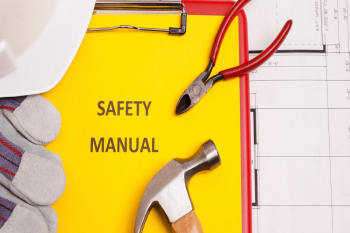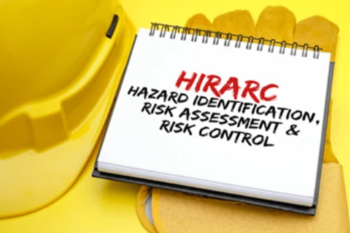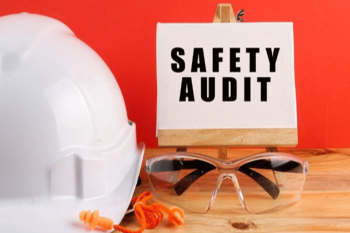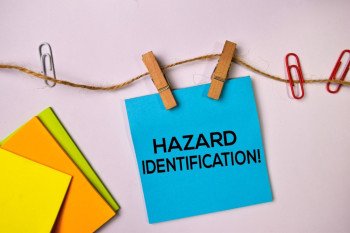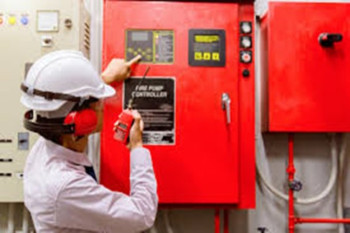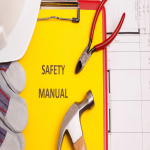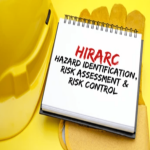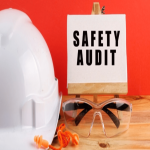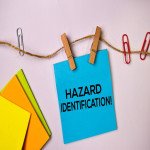FAQ- FIRE AUDIT
Q1. What is Fire Audit?
A1. The definition of Fire Audit is as follows:
A fire audit serves several essential objectives aimed at ensuring the safety and preparedness of a facility in the event of a fire emergency. Firstly, it involves a thorough assessment of existing fire safety measures to determine their effectiveness. This evaluation encompasses various aspects, including the functionality of fire detection systems, availability and adequacy of fire extinguishing equipment, clarity of evacuation procedures, and the use of fire-resistant construction materials.
Additionally, a fire audit is conducted to verify compliance with applicable fire safety regulations, codes, and standards at the local, national, and international levels. By identifying potential fire hazards within the premises, such as electrical faults, improper storage practices, or obstructed evacuation routes, the audit aims to assess the level of risk associated with these hazards and the potential impact of a fire incident. Based on these assessments, recommendations are provided to improve fire safety measures, which may involve upgrading equipment, enhancing training programs, or implementing procedural changes.
Furthermore, the audit evaluates the readiness of personnel to respond effectively during a fire emergency, including their familiarity with evacuation protocols, communication procedures, and coordination with emergency responders. Documentation and record-keeping play a crucial role in maintaining accurate records of fire safety inspections, findings, recommendations, and corrective actions taken. Ultimately, the goal of a fire audit is to foster a culture of continuous improvement in fire safety practices, ensuring the protection of occupants and property while minimizing the risk of fire-related incidents.
Q2. What is the Objective of Fire Audit?
A2. The objective of Fire Audit is as follows:
The primary objective of a fire audit is to assess the effectiveness of fire prevention and protection measures within a facility. It aims to identify potential fire hazards and evaluate the adequacy of fire safety systems, such as alarms, extinguishers, and sprinklers. The audit seeks to ensure compliance with relevant fire safety regulations and standards. Additionally, it aims to recommend improvements or corrective actions to enhance fire safety preparedness. Ultimately, the goal of a fire audit is to minimize the risk of fire-related incidents and protect lives and property.
Q3. What reference is commonly used for Fire Audit?
A3. The commonly used reference for Fire Audit is as follows:
TAC Fire Protection Manual.
·NFPA 13/20
IS 2190:1992; Selection, Installation and Maintenance of First-Aid Fire Extinguishers — Code of Practice
Q4. What is the methodology for Fire Audit?
A4. The methodology for Fire Audit is as follows:
Opening Meeting
Before starting Fire Audit, auditor will hold an opening meeting with auditee team members from client. The agenda for opening meeting will be of sharing pre-audit finding and discussion on major area of focus as regard to dangerous machines/operation/applicable schedules/chemical hazards/applicable act & rules.
● Site observations
Site observation will be noted by the auditor in separate sheets. The observation will include unsafe conditions and practices observed during the plant visit. This will also include a mock drill of fire-fighting systems, checking their adequacy and healthiness.
● Document Verifications
The documents are verified on site as well as in the conference room. Some of the critical documents must be kept in fire safe that also has to be verified and tagged.
● Debriefing Meeting/Closing Meeting
The closing meeting provides high-level authorities with information relating to the findings and recommendations of the audit team. The meeting should ensure that the auditee team members/industry clearly understand the situation as audited by the HSE Consultant team and are able to start work on a corrective action plan, should it be deemed necessary. The meeting should emphasize the most significant safety issues and concisely present the team’s findings and opinions regarding the effectiveness of the Industry’s firefighting system.
● Reporting and Recommendations
At the end of the Audit, a comprehensive fire audit report will be provided on the findings of the Audit and recommendations for the next course of action. The recommendations suggested for risk improvement are given.
Q5. What are the steps for the Fire Audit?
A5. Following are the steps for Fire Audit:
Q6. What are documents deliverables for Fire Audit?
A6. The documents deliverables for Fire Audit are as follows:
Q7. Who conducts fire audits for chemical industries?
A7. Fire Audit for chemical industries are conducted by following:
Fire audits for chemical industries are typically conducted by certified fire safety professionals or consultants with expertise in industrial safety and fire prevention. These professionals often work independently or are hired by regulatory authorities to ensure adherence to safety standards.
Q8. What does a fire audit for chemical industries involve?
A8. Fire Audit for chemical industries involve the following:
A fire audit for chemical industries involves a systematic inspection of various aspects related to fire safety, including:
·Evaluation of fire detection and alarm systems
Assessment of fire suppression and extinguishing systems
Inspection of emergency exits, evacuation routes, and signage
Review of storage and handling procedures for hazardous materials
Examination of electrical systems and potential fire hazards
Verification of compliance with relevant safety regulations and codes
Q9. How often should fire audits be conducted for chemical industries?
A9. The frequency of conducting fire Audit for chemical industries is as follows:
The frequency of fire audits for chemical industries may vary depending on factors such as the size of the facility, the nature of operations, and regulatory requirements. However, it is generally recommended to conduct fire audits at regular intervals, typically annually or biannually, to ensure ongoing compliance and address any emerging safety concerns promptly.
Q10. What are the benefits of conducting regular fire audits for chemical industries?
A10. Following are the benefits of conducting regular fire audits:
Identification and correction of fire hazards and safety deficiencies
Enhancement of fire prevention and emergency response capabilities
·Compliance with regulatory requirements and industry standards
·Reduction of the risk of fire-related incidents and associated losses
Protection of personnel, assets, and the environment
Q11. How can chemical industries stay updated on fire safety regulations and best practices?
A11. Chemical industries can stay updated on fire safety regulations by following ways:
Regularly monitoring updates from relevant regulatory authorities, industry associations, and professional organizations
Participating in fire safety training programs, workshops, and seminars
Engaging with fire safety consultants or advisory services specializing in industrial safety
Networking with peers in the industry to exchange information and experiences regarding fire safety initiatives and lessons learned.
Q12. How can chemical industries prepare for a fire audit?
A12. Industries can prepare for Fire audit by following ways:
Conducting internal inspections and assessments to identify and address potential fire hazards
Ensuring that fire safety systems and equipment are properly maintained and tested regularly
Providing training to employees on fire safety procedures, emergency evacuation plans, and the use of firefighting equipment
Keeping accurate records of fire safety inspections, maintenance activities, and employee training
·Coordinating with fire safety professionals or consultants to conduct pre-audit assessments and address any identified issues proactively.
Q13. What information does the executive summary of a Fire Audit Report typically include?
A13. Executive Summary of a Fire Audit Report typically include the following:
The executive summary of a Fire Audit Report provides a overview of the Audit’s objectives, methodology, key findings, and recommendations.
It typically includes:
Introduction: Briefly outlines the purpose of the Audit and the systems/processes analyzed.
Methodology: Describes the approach used in the Audit including the team composition.
Key Findings: Summarizes the significant deviations or hazards identified during the Audit, along with their potential consequences.
Recommendations: Provides high-level recommendations for mitigating the identified hazards and improving the safety and firefighting capability of the system.
Conclusion: Concludes with a summary of the overall importance of the Audit and any next steps.
·
Q14. What is the Comment Resolution Sheet Format?
A14. The meaning of Comment Resolution Sheet (CRS) is as follows:
A comment resolution sheet is a document used to track and address comments, feedback, or issues raised during a review process, audit, or evaluation.
DISCLAIMER
This Blog is provided solely for informational and educational purposes. It is advisable to verify all information presented and consult with appropriate experts or professionals before making any decisions or implementing any strategies based on the content of this blog. HSE Risk Management Services Pvt. Ltd. accept no liability for any actions taken or not taken based on the information provided herein.
THANK YOU
